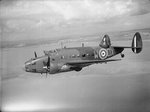daveT
Senior Airman
I'm working on a historical study of Lockheed Hudsons used for training in the US.
I would like to know what pilots thought about flying the Lockheed Hudson? For training in them?
Did they like them or hate them? were they a safe plane to fly? did they have a good reputation?
Anything interesting about the Lockheed Hudson?
I'm not interested in their well documented RAF history.
I'm looking for their use by the USAAF. Especially their use for twin engine training.
photo of a Lockheed Hudson assigned to Columbus AAF Mississippi
Thanks in advance
DaveT
I would like to know what pilots thought about flying the Lockheed Hudson? For training in them?
Did they like them or hate them? were they a safe plane to fly? did they have a good reputation?
Anything interesting about the Lockheed Hudson?
I'm not interested in their well documented RAF history.
I'm looking for their use by the USAAF. Especially their use for twin engine training.
photo of a Lockheed Hudson assigned to Columbus AAF Mississippi
Thanks in advance
DaveT


